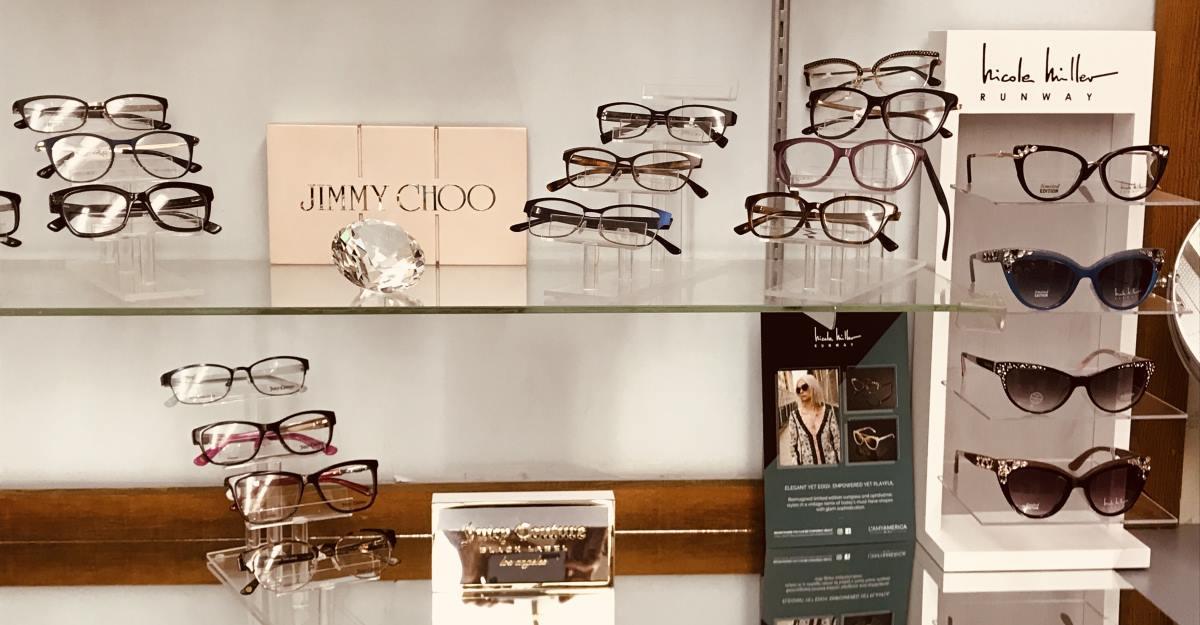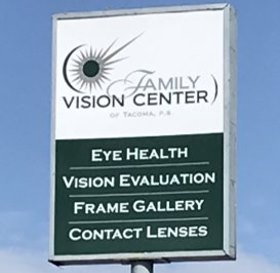Eyeglasses

Eyeglasses, also called spectacles, are custom-made specifically for the person who is prescribed them. Though spectacles are extremely common, there is a lot of time and expertise that goes into fabricating them behind the scenes. The measurements of today’s frames and the placement of the lenses in them are made down to the half millimeter, and their optics are very sophisticated, making them comfortable to wear, and crisp to look through. Given how important vision is to our lives, and how prominently spectacles are displayed on our faces, getting glasses made of good quality materials and consulting a professional to advise you is wise. Obviously, the two parts of these devices to consider when ordering are the lenses and the frames.
Lenses
Each lens prescription describes the optics necessary to make the vision clear at a certain distance; lens prescriptions are calculated to put the focus of the vision at a specific viewing distance (near, intermediate, or far, or a combination of these). The three possible numbers you see on a prescription are sphere, cylinder, and axis, which describe the overall power, any extra optical power needed at a certain angle, and the angle where this extra power is put (respectively). The most common optical imperfection the human eye has is astigmatism, which is accounted for by this ‘cylinder’ and ‘axis’ part of the prescription. (Astigmatism is not a serious condition, only an impressive-sounding word!) Most people’s eyes will have minor optical imperfections, but lenses are prescribed for those things that impair function, or cause discomfort.
Another section you will see on a lens prescription is the Add power, which is used when multifocal designs are prescribed. This is a family of lens designs used for people who need extra optical power on the bottom portion of their lenses to help them see closer up. There are segment designs (bifocals, trifocals) and Progressive Add Lenses (‘lineless bifocals/trifocals’—somewhat of a misnomer). The most common reason to wear a multifocal is presbyopia (see article ‘Vision over 40’), but they are used for anyone who has problems focusing up close (see article ‘Children’s Vision’).
Prism is prescribed to help people who have eye pointing problems. The amount, and in what direction it is to be put, is specified to bring the images of the two eye to the wearer so that their eyes don’t have to uncomfortably overcome their tendency to be misdirected. (When this is on a prescription, it is very important.)
Interpupillary distance, abbreviated PD, describes where the optical centers of the lenses are to be put (each lens has one). If the center of each lens is not placed over where each eye is looking, the lens will induce prism, possibly making the wearer see double, have distorted vision, or at least make their eyes uncomfortable. ‘Reader’ glasses, available over the counter without a prescription, may induce this if the wearer’s eyes are set wider or narrower than the population average these mass-produced devices are manufactured at (see article ‘Vision over 40’).
Lens features not specified on a prescription mainly include the lens material, and the coatings put on the lenses to enhance their functioning. The two families of materials ophthalmic lenses are made of are glass and plastic. Glass has been almost completely replaced by plastics because it shatters and chips much more readily, is at least 40% heavier, and fogs up more than any plastic. The most common plastics used for spectacles are: CR-39, which is the default material used unless you specify something else; high-index plastics, which are denser, and are typically used for high prescriptions to cut down on their weight and thickness; and polycarbonate, also a high-index material, but is much preferred when making spectacles which have no frame, or are partially frameless, because of its superior resistance to chipping and cracking. OSHA also specifically requires Polycarbonate lenses for use in all protective eyewear because it doesn’t shatter. Common coatings put on spectacle lenses are scratch-resistant coating, photochromic coatings, and anti-reflection (A/R) coatings. Scratch-resistant coatings harden the surface of a plastic lens to increase durability (we highly suggest this). Photochromic lenses, of which Transitions is a prominent brand, increase comfort by darkening in the presence of bright light. Anti-reflection (AR) coatings enhance the appearance of a lens by greatly reducing reflections off of it, but also increase the ability for light to pass through a lens by reducing reflections within it. This makes vision crisper. Ophthalmic lenses should not be cleaned with paper products (even products sold in stores) because these are too abrasive, leaving microscopic scratches on the surfaces which ruin the surfaces over time. Best to use a soft cloth, preferable having moistened the lenses first with a cleaner designed for ophthalmic lenses. Scratches cannot be ‘buffed out’ of an ophthalmic lens because this changes the prescription.
Ophthalmic Frames
Professional optical advice is very important to choosing frames that will work best with a given strength of prescription and lens type. (This article doesn’t concern itself with the aesthetic aspects of choosing frames, but our staff is!) Frames are made out of specialized metal alloys or plastics, and usually a combination of both.
Frame specifications include the bridge width (the minimum distance between the two lenses at the nose pads), the eyesize (the minimum distance from the inner to outer edge of each lens) and the temple length (how long the ‘arms’ are). Most frames are manufactured in at least two bridge-width/eyesize combinations and at least two color schemes.
Frames are made with the metal or plastic material fully surrounding the lenses, partially around, or ‘frameless’, where the temples and bridge are attached using holes drilled into the lenses themselves. (These are also called ‘drill-mounted’ frames.) When you choose a frame type, a major consideration is the anticipated appearance of the finished product (important for those with higher prescriptions), but also weight and durability. Generally speaking, drill-mounted frames are the lightest but most delicate, and full-frames are the most durable—especially if made with highly-flexible materials and spring-mounted
hinges. As mentioned above, Polycarbonate plastic is much preferred for partially-frameless or drill-mounted frames as it is the most durable. Most of the wear put on a frame comes from putting it on and taking it off; the best method is using both hands at the same time to pull the frame forward rather than using one hand.
Though every effort has been made to be accurate, all articles contained within this website are for strictly informational purposes, and not to be used as a sole source for healthcare training and instruction. Neither does Family Vision Center of Tacoma, P.S., assume responsibility for actions undertaken by someone using information presented on this website to make healthcare decisions.
Glowing Reviews
Dr Gorham was a great doctor! I’m always scared to death of people being around my eyes, but I was very comfortable with him. He didn’t make me feel like just another patient. Thanks!
Jennifer, Puyallup
I was very pleased and felt like a person not a numbered patient. Thank you!
Brenda, Tacoma
Terrific customer service, warm and caring. Beyond the above mentioned kudos, the technical knowledge of products was A+. Will recommend your office!
Kathy, Tacoma
Fantastic little vision center. I've been going to the same eye doctor most of my life because I have a wacky prescription. Dr. Chung's exam was incredibly quick for how accurate my prescription is! The staff
Peter
You are the best eye doctor ever, very thorough, concerned, and courteous. Thanks for the great experience. I love that you take the time to call when my son’s glasses came in. You have a client for life!
Christina, Tacoma





